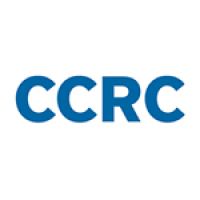By Clive Belfield and Thomas Brock
Many high school students will soon enroll in community colleges after more than a year of disruptions from COVID-19. Community colleges will need to be ready for these new cohorts of students and may need to respond with significant organizational and instructional changes, including better-calibrated assessments, more math pathways and corequisite support courses, and more targeted advising and student supports.
New survey data gives us some clues about what students and colleges are facing. Every 1–2 weeks since the end of April 2020, the U.S. Census Bureau has surveyed households on their lives during the COVID-19 pandemic. The surveys provide near real-time snapshots of how the pandemic has shaped educational decisions within households. Each round of the survey involves a random selection of 100,000 addresses from across the country that are scientifically chosen to represent the entire population. We analyzed data from mid-August 2020 to late February 2021 that includes information from over 250,000 families with school children and from over 100,000 respondents who reported “plans for community college” for at least one member of their household.
We cannot know exactly who will enroll in community college over the next few years. Instead, here we report results for “likely community college enrollees” for each state. The likelihoods are based on weights created using demographic data from the households that report “plans for community college.” We then applied these weights to the responses of families with school children. Nationwide patterns and a state-by-state breakdown are described below.
Out-of-School Instruction Has Increased
The pandemic has changed schooling in fundamental ways. For at least part of the academic year, instruction has moved away from the school building: Two thirds of students had their classes moved online, one quarter had classes canceled, and one-in-six had to move to distance learning with take-home materials. Additionally, student interactions with their teachers have decreased since the start of the pandemic: One-in-six students has not had any contact with a teacher—either live or virtual—within the previous week. Class cancellations clearly mean less time for students to learn, and although the effectiveness of online learning is debatable, it seems unlikely that students are best-served by online learning at this scale.
How COVID-19 Has Changed How Students Learn
Not all states have canceled classes at the same rate. Students on the west coast states have experienced very high cancellation rates, while those in the Midwest have not been as affected. Twice as many students have had class cancellations in Oregon than in North Dakota or South Dakota, for example.
Computer Access Is Far from Universal
Some students struggle to learn online because they do not have dedicated computers or regular internet access. Nationally, one quarter of families report that they have not always had a computer available for educational purposes during the pandemic. Similarly, just over one quarter report that they do not have full internet connectivity.
Households Reporting Computers and Internet ‘Not Always Available’ for Educational Purposes
Here too, there is significant variation by state. Students in Virginia and California have high rates of computer access, while those in Louisiana and Montana have much lower rates.
Student Learning Time Has Fallen
Educational disruptions have led to an overall reduction in time spent on class activities and homework. Of course, not all students have suffered and not all states have had the same experience.
To illustrate the magnitude of losses, we report on lost learning time overall. The Census survey asks families to compare learning time before the pandemic with learning time during the pandemic. As shown below, almost half of all students are spending either less or much less time on educational activities. One third say learning time is unchanged and one-in-six report learning time has increased.
Learning Time Relative to Before the Pandemic
The losses in learning vary significantly by state, though there are net losses in learning for high school students across the country. In Oregon and Washington, significantly more than half of families report a loss of learning time, but in the Midwest and mountain states, learning losses appear to be much lower.
We don’t know exactly what these disruptions and lost learning time will mean for students when they enter college in the fall. But for community colleges, these findings suggest that future students will not be as well-prepared as prior cohorts. Students will likely need more help as they take on college-level work as freshmen. Many community colleges have been restructuring their developmental programs to help students take on college-level work more quickly and these colleges may be better prepared to accept post-pandemic cohorts of students. However, given the widespread scale of the learning deficit, many colleges may need to expand these programs and invest more heavily in advising, tutoring, and other services to provide the supports students need and to help them make a successful transition to college.
Factors Affecting Learning, by State
Clive Belfield is a professor of economics at Queens College, CUNY, and a CCRC research fellow. Thomas Brock is the director of CCRC.





